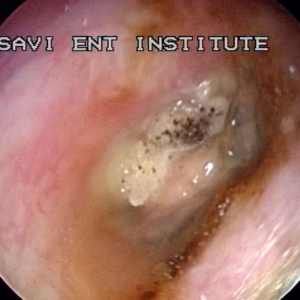In the realm of modern medical marvels, the Navigation System in Sinus Surgery stands as a beacon of technological innovation. With an intricate dance of precision, real-time mapping, and unparalleled accuracy, this system has redefined the landscape of sinus surgery. As we embark on a journey through the fascinating world of this cutting-edge tool, we uncover the pivotal role it plays in enhancing patient outcomes and ushering in a new era of surgical excellence.
Navigating the Complex Terrain
The human sinus is a delicate network of interconnected air-filled cavities within the skull, each with its own critical role in respiratory function and overall well-being. Sinus surgery, while crucial in relieving chronic sinusitis and addressing various sinus-related issues, demands a meticulous approach. Traditional surgical techniques, while effective, often faced limitations in navigating through intricate sinus anatomy. This is where the Navigation System enters, seamlessly merging the surgeon's expertise with technological precision.
The Dynamics of the Navigation System
Picture this: a surgeon equipped with a high-definition monitor, which displays a dynamic, real-time map of the patient's sinus anatomy. With every surgical move, the system tracks the position of instruments with pinpoint accuracy, guiding the surgeon through the twists and turns of sinus passages. This is not mere visualization; it's a comprehensive navigation experience that empowers the surgeon to traverse the sinus landscape with confidence, making informed decisions in the blink of an eye.
Unraveling the Benefits
The advantages of the Navigation System are manifold. Its ability to provide three-dimensional mapping of the surgical field is particularly invaluable in revision surgeries. When a patient's sinus anatomy has been altered by previous interventions, the system ensures the surgeon's path is clear, avoiding potential pitfalls and reducing the risk of complications.
Precision is the cornerstone of this system. It offers real-time measurements, allowing the surgeon to determine the depth of instrument insertion, angles of approach, and the precise amount of tissue to be removed. This level of accuracy significantly minimizes the chance of damage to vital structures, such as the optic nerve or the carotid artery, both of which are situated in close proximity to the sinuses.
Beyond the Operating Room
The impact of the Navigation System reverberates beyond the confines of the operating room. Surgical times are streamlined, reducing patient exposure to anesthesia and overall procedural stress. The recovery period is often shorter, granting patients quicker relief and returning them to their daily routines sooner than traditional approaches would allow.
This system also contributes to reduced radiation exposure. By utilizing advanced imaging techniques such as cone-beam computed tomography (CBCT) or intraoperative CT, it offers detailed insights without the need for extensive radiation. This dual benefit of precision and reduced radiation aligns perfectly with the current ethos of personalized medicine and patient-centered care.
Harmonizing Technology and Expertise
It's important to note that the Navigation System doesn't replace the surgeon's expertise; it elevates it. This technology serves as a powerful tool, a collaborator in the intricate dance of surgery, enhancing the surgeon's capabilities and pushing the boundaries of what can be achieved. The human touch, the nuanced judgment of a skilled surgeon, remains at the heart of every successful surgery, and the system complements this, striving for perfection in the pursuit of improved patient outcomes.
Future Horizons
As we glimpse into the future, it's evident that the Navigation System in Sinus Surgery is poised for further evolution. Advances in technology will likely usher in even more sophisticated iterations of this system, pushing the envelope of precision, reducing invasiveness, and expanding its applicability to a broader range of sinus-related conditions.
In the grand tapestry of medical progress, the Navigation System in Sinus Surgery stands as a testament to human ingenuity and the relentless pursuit of excellence in patient care. Its real-time mapping, precision-driven approach, and reduction of procedural stress have redefined the way we perceive sinus surgery. As this technology continues to evolve, it will undoubtedly solidify its place as an indispensable asset in the sinus surgeon's toolkit, reaffirming our commitment to providing patients with the best possible outcomes in their journey towards sinus health and overall well-being.



